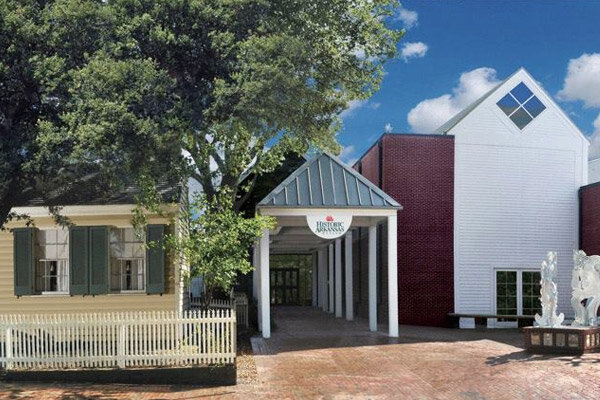Interview with Historic Arkansas Museum Curator Carey Voss
Carey Voss is a native Arkansan with deep roots that have kept her coming back to the region. Her experience as an artist and educator and her can do attitude are put to great use at what she calls her ‘dream job’ – Curator of Exhibits at the Historic Arkansas Museum.
AAS: Carey are you originally from Arkansas?
CV: I was born in Conway -- a fifth-generation resident of Faulkner County on my dad’s side. My ancestors were mostly “dirt farmers,” so I was raised as a reluctant pragmatist. At four years old, I proudly announced my desire to become a lady wrestler. The wrestling phase passed quickly, but I never stopped dreaming about art. I loved to draw, and I received a lot of praise for it. Still, growing up, sensible adults frequently cautioned against pursuing the arts. In high school, a beloved history teacher wrote in bold letters across the chalkboard, “LIBERAL ARTS = POVERTY.” Of course, most of us took his warning as a challenge and plunged headlong into impractical lives of academic passion (and poverty).
I entered Hendrix College on full scholarship through the Governor’s Distinguished Scholars program and as a National Merit Scholar with the intention of majoring in Studio Art, but I didn’t have a clear picture of how to make a living with an art degree. Around the same time, Hendrix hired a young art professor named Matthew Lopas. I enjoyed Matthew’s structured, rigorous approach to drawing and painting from life, and before the end of my senior year, I felt certain that my future as an artist hinged on landing a position as a college art professor. So, Vanessa Norton McKuin (with whom I shared studio space at Hendrix) and I loaded up our essential possessions and moved to New York City. Through the winter of 2002, we shared a tiny East Village apartment, and I walked eight frigid city blocks to study at the New York Studio School every day.
AAS: How did being an artist yourself and your art education prepare you for your position as Curator of Exhibits at Historic Arkansas Museum?
CV: There were… some bumps in the road. Even as I finished graduate school in 2005 and received an MFA from American University in Washington, DC, I never seriously entertained working for a gallery or museum. I wanted to make art, and I loved teaching. It seemed simple, but the competition for (dwindling) tenure-track positions was fierce.
When I imagined my path to success, I envisioned a gentle upward slope, rising in stair-steps supported by talent and hard work, toward a platform representing a full professorship. Like many young adults, I quickly realized the brutal truth that Reality doesn’t care about what is “supposed to happen.” In real life, my dad committed suicide, I looked for work during a national recession, and I struggled with my own mental and physical health issues. Fortunately, grit and perseverance paid off, and I made the most of opportunities that led to the development of different (but equally useful) skillsets. For four of the most professionally fulfilling summers of my life, I taught Visual Art at Arkansas Governor’s School. After that, there were three years of teaching Art Appreciation and First Year Experience at University of Central Arkansas, and a year and a half designing a curriculum and writing lesson plans for a STEAM non-profit in Boulder, Colorado.
“Each major exhibition is a new lesson in creative problem-solving; curating a show stretches my abilities as a designer, scholar, educator, project-planner, collaborative thinker, manager, communicator, and handler of heavy yet delicate objects.”
By the time I landed at HAM as part-time Assistant Curator of Exhibits in 2014, my path to success looked like a hilariously twisted “curves ahead” road sign. I didn’t know much about curating exhibits, but I found myself under the wing of Donna Uptigrove (currently HAM’s Assistant Director), a ceramicist who worked at Gallery 26 before she came to Historic Arkansas Museum. For the next few years, Donna and I worked closely to plan, design, and install every exhibit. Gradually, as Donna took on more administrative duties, I began assisting with all kinds of tasks – things I never would’ve gotten to do at a larger museum. My responsibilities grew, and I realized that everything I learned in my previous roles as an artist, writer, and educator made me a stronger curator and team member. Each major exhibition is a new lesson in creative problem-solving; curating a show stretches my abilities as a designer, scholar, educator, project-planner, collaborative thinker, manager, communicator, and handler of heavy (yet very delicate) objects. Unintentionally, I discovered my dream job.
AAS: What is HAM? What is its mission?
CV: When people find out that I work at Historic Arkansas Museum, most local folks say, “oh yeah, where is that?” I mention the historic structures, or I ask if they’ve ever noticed a log cabin in downtown Little Rock. If that doesn’t work, I say, “did you ever visit the Arkansas Territorial Restoration as a kid? Maybe on a school field trip?” Only then does a dim light of recognition glow in their eyes. Occasionally, someone will praise an exhibit they’ve seen at the museum – usually the knife gallery or the Native American exhibit, We Walk In Two Worlds. But mostly, it’s as if the whole museum center is invisible -- like when you’re searching for your glasses even though they’re sitting on top of your head.
Historic Arkansas Museum’s name has changed a couple of times since Louise Loughborough saved three antebellum structures (and accidentally demolished William E. Woodruff’s 1823-1827 print shop!) in 1939, but the institution’s mission has always been related to the preservation and promotion of Arkansas’s cultural heritage. HAM’s collection includes over 35,000 objects. About 80% of those items were made in Arkansas – most before 1900. Every member of the HAM staff is united in our commitment to care for the objects in our collection, to perform scholarly research that helps us learn more about who made those items and how they were made, and to share that knowledge with our visitors through dynamic education programs, events, and exhibits. We’re interested in telling true stories about Arkansas history through objects made and used by real Arkansans.
Bill Worthen, Swannee Bennett, Parker Westbrook, and members of the original Arkansas Made team documented and collected many of these objects in the 1970s and 80s in an effort to prove that the mechanical, decorative, and fine arts produced in early Arkansas equaled the furniture, textiles, paintings, pottery, silver, and weapons made in New England and the Carolinas in the 18th and 19th centuries. The result of decades of field work, the first two Arkansas Made books were published in the late 1990s. In early 2021, with the help of longtime collaborators and scholars like Jennifer Carman, Dr. Ann Early, and (HAM Curator of Collections) Victoria Chandler, University of Arkansas Press produced a gorgeous pair of updated and expanded Arkansas Made volumes. At over 1,300 pages, with hundreds of beautiful full-color photographs, this survey of items held in public and private collections lays to rest any lingering doubts about whether the work of Arkansas artists and artisans is worthy of study.
Historic Arkansas Museum is supported by the State of Arkansas as a museum of the Division of Arkansas Heritage, which is part of the Arkansas Department of Parks, Tourism and Heritage. The museum is funded by state tax revenue, the Loughborough Trust, the Historic Museum Foundation, membership dues and donations, and by a grant from the Arkansas Natural and Cultural Resources Council. I like to say that the museum and its collection are owned by the people of Arkansas; we (HAM staff) are simply stewards of this wonderful resource.
AAS: Last week I interviewed Patrick Ralston, director of the Arkansas Arts Council and we talked about the Arkansas Living Treasure Award. HAM produces short films on some of the awardees such as Leon Niehues, Robyn Horn, and Winston Taylor, who I have had the privilege of interviewing. Is there much collaboration between agencies?
CV: Similar to our sister agency, the Arkansas Arts Council, HAM is a museum of the Division of Arkansas Heritage, under the umbrella of the Arkansas Department of Parks, Tourism and Heritage. Each Heritage agency and museum has its own scope, and is driven by its mission, but we collaborate with each other when those areas of scope and mission overlap. For instance, Collectively Alone (featuring Benjamin Krain and Kensuke Yamada), a recent exhibit in Trinity Gallery for Arkansas Artists, was curated by AAC’s Robin McClea. Since the Arts Council doesn’t have a dedicated gallery space, Robin exhibits artists selected from the Arkansas Artist Registry on a semi-regular basis.
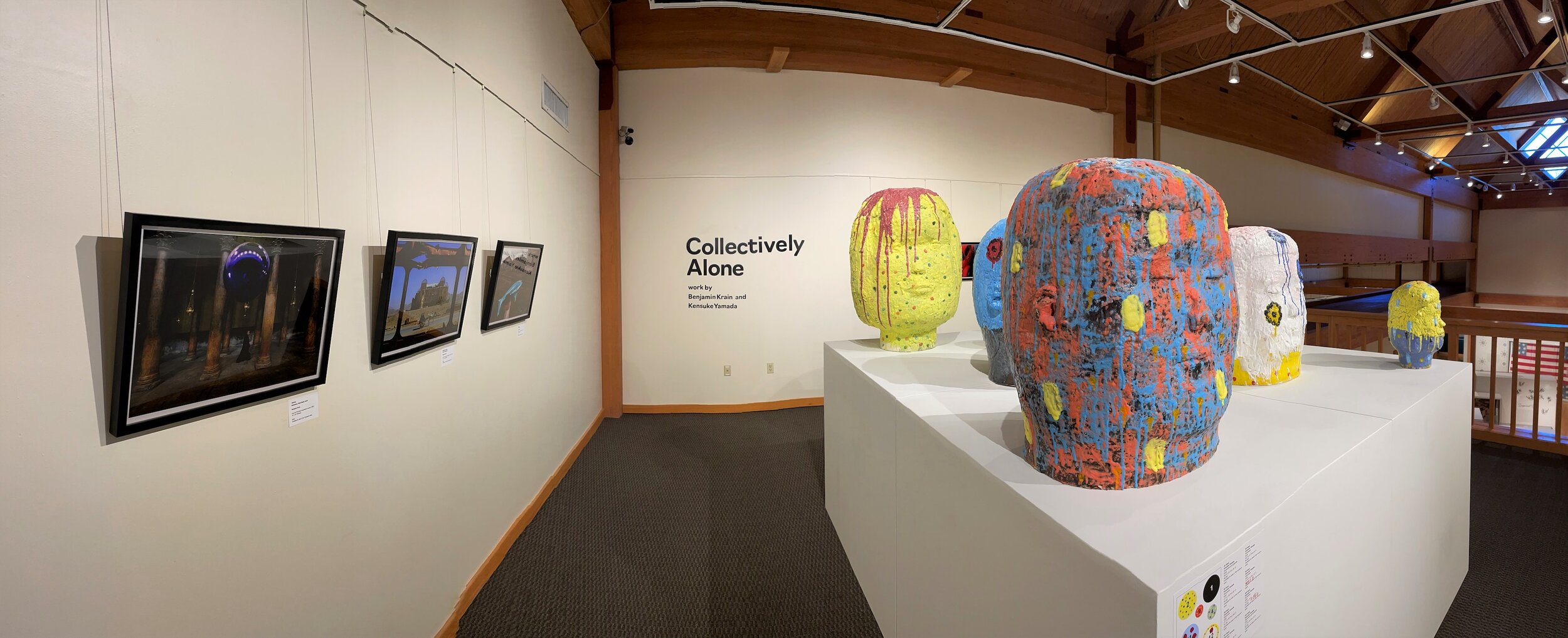
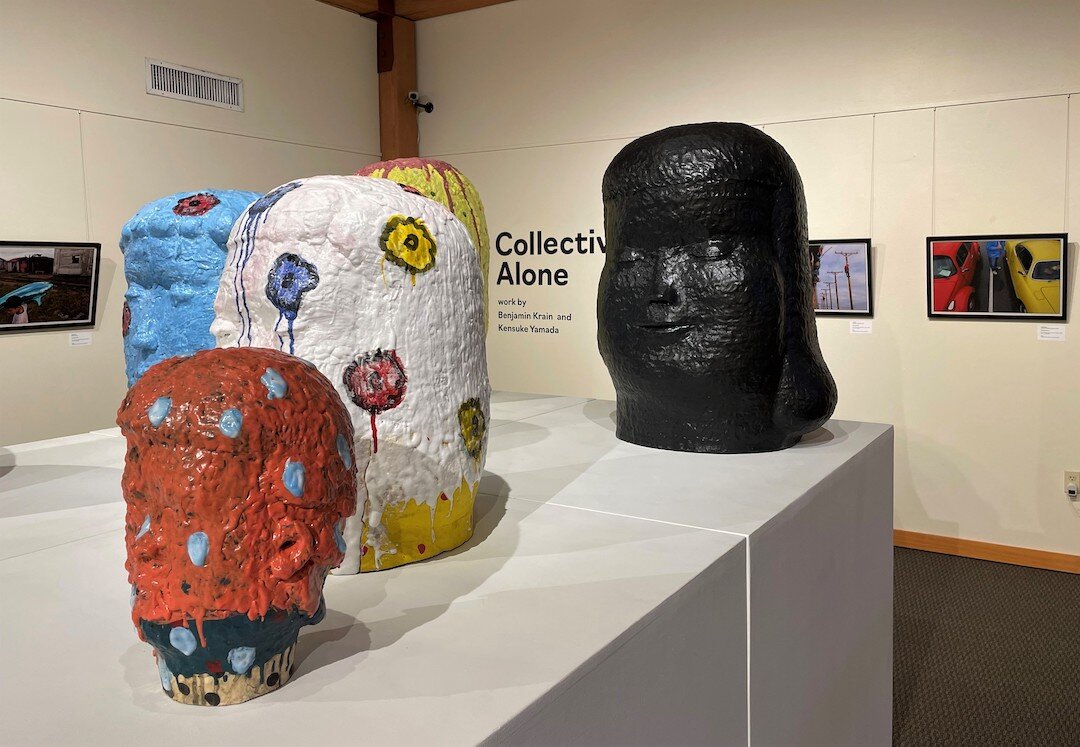
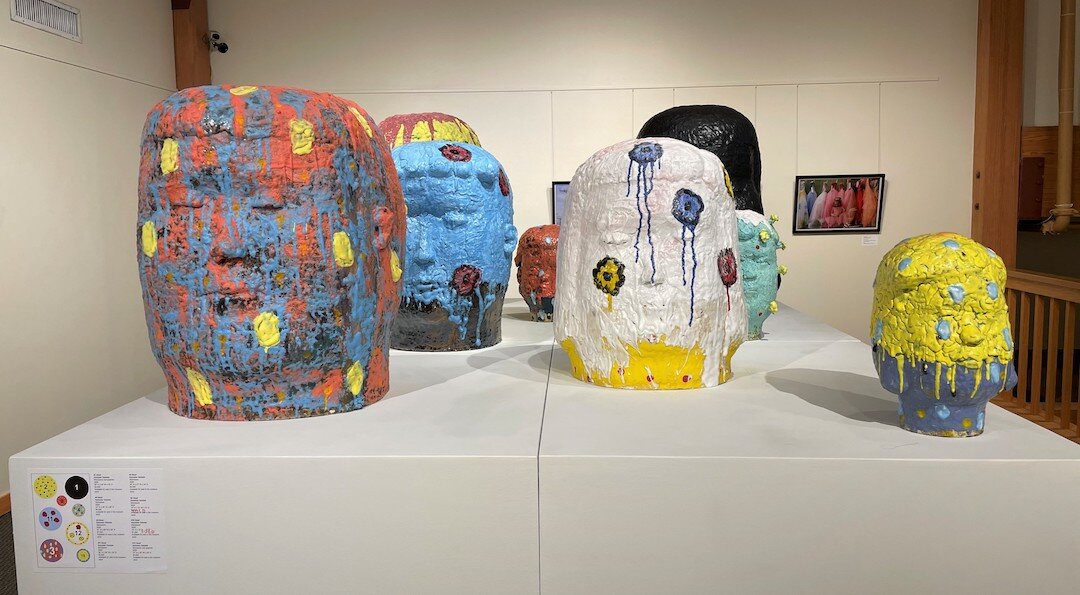
AAS: HAM has wonderful exhibit space. How many exhibits can run simultaneously?
CV: HAM’s approximately 50,000 sq ft museum center includes eight galleries, as well as a number of niches and small display spaces. The Children’s Gallery, The Knife Gallery, and Cromwell Gallery (which houses We Walk in Two Worlds), are considered semi-permanent galleries; they are occasionally closed for refurbishment, but the purpose of those spaces doesn’t change. The two largest galleries, Cabe Gallery and Arkansas Made Gallery, are reserved for major exhibitions -- usually thematic interpretations of objects from the permanent collection. Major exhibitions often require years to plan, research, and execute, so we keep those exhibits on display for between one and two years (depending on conservation concerns). At this time, we only show the work of contemporary Arkansas artists and artisans in Trinity Gallery, which overlooks Cabe Gallery. In an effort to create a more sustainable exhibit schedule, we now rotate Trinity three times a year instead of four. If most exhibits in that space are two- or three-person shows, that means we can accommodate between six and nine artists per year. With hundreds of established, practicing artists and artisans in the state, we simply can’t include everyone, even if they are producing excellent work.
Gone To Seed featuring Susan Chambers and Aaron Calvert in Trinity Gallery May 14 - August 22, 2021
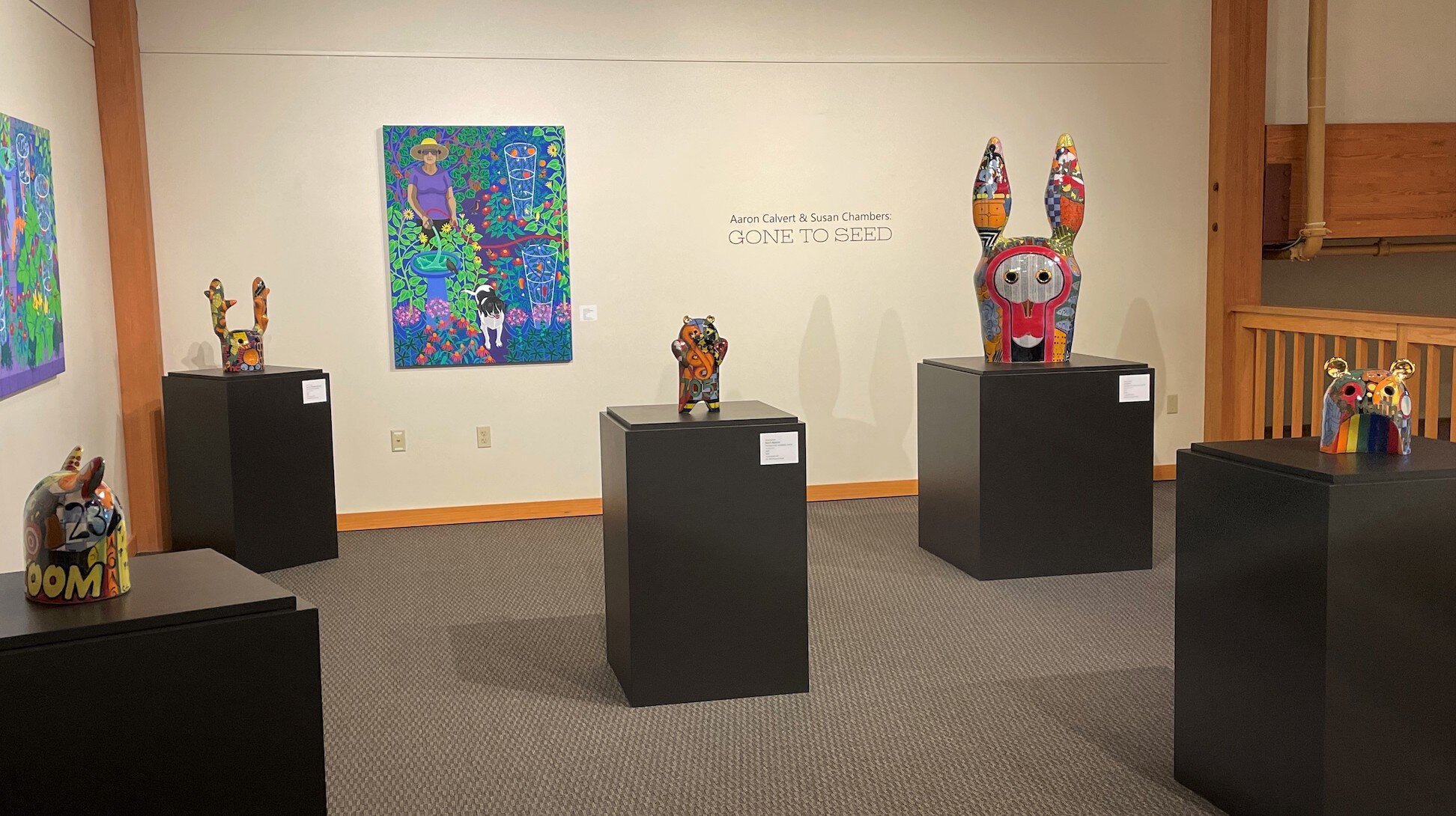
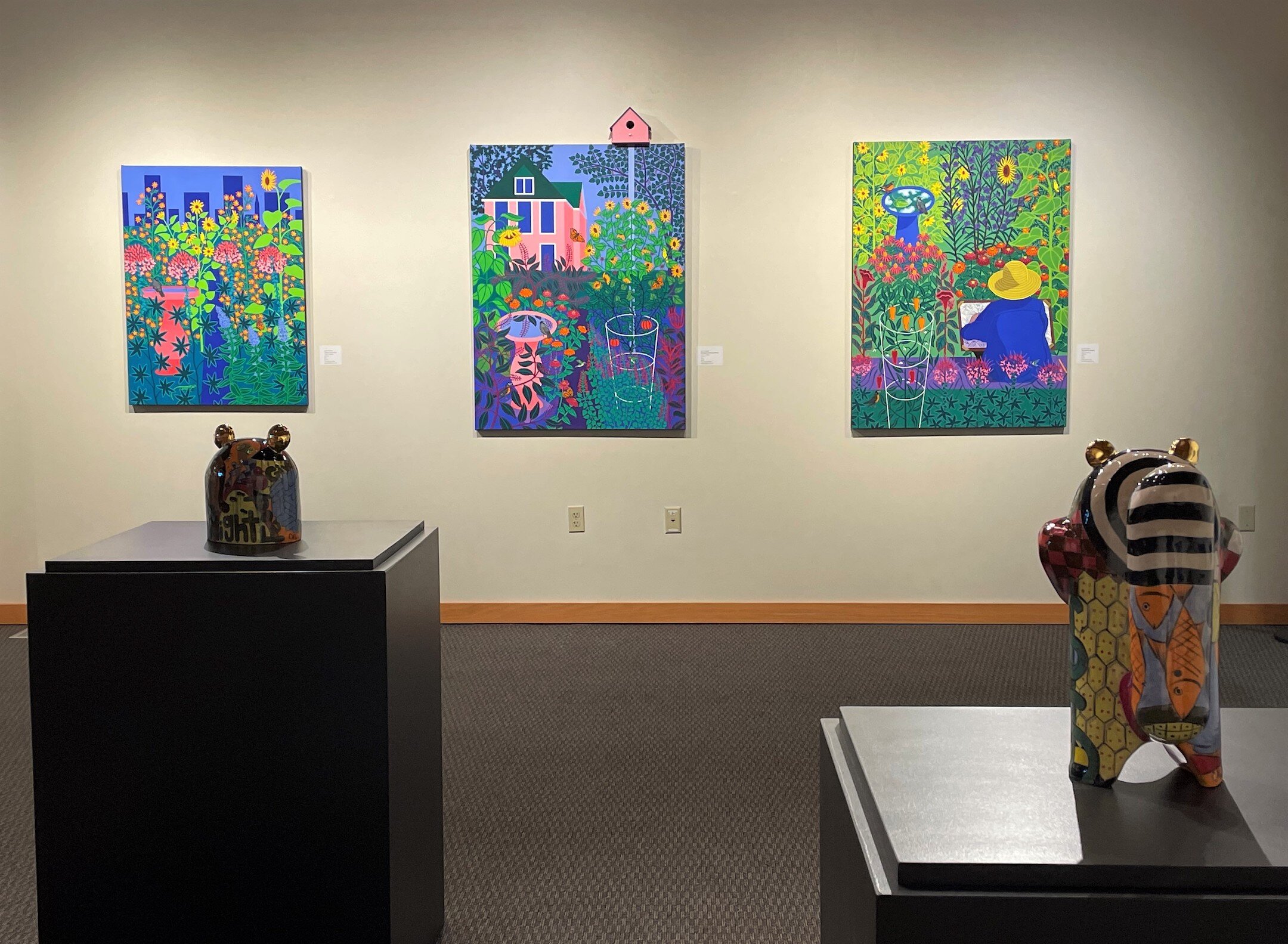

AAS: What is the process for choosing/deciding on an exhibition from Arkansas artists?
CV: Like many curators, I obsessively follow thousands of artists and makers of all types on Facebook, Instagram, etc. I browse the Arts Council’s Arkansas Artist Registry. During non-pandemic times, I regularly attend exhibit openings at galleries and museums across the state. One of the advantages of being an Arkansas artist myself and working with contemporary artists and artisans at HAM is that I know most (but never all!) of the established artists in the state. Friends and colleagues frequently suggest that I check out someone new, and I always do. My desire to look at art and craft objects is insatiable. I keep a running list of people I’d like to show in Trinity Gallery. Every time I book a block of exhibits, I revisit that list and see what everyone is doing, and I discuss my decisions with HAM’s Curatorial Council. Artists are always welcome to contact me by email (carey.voss@arkansas.gov) with an exhibit proposal. I do my best to get back to everyone who inquires. It’s hard! I wish we had space to show all the wonderful work produced by Arkansas makers.
AAS: You have been at HAM for almost 10 years now. How many exhibits have you been involved in? Which exhibits are your favorites?
CV: I don’t think it’s an exaggeration to say I’ve been involved in every exhibition at Historic Arkansas Museum since I began working here in January of 2014. In 2019, we rotated 27 exhibits – everything from single day pop-ups to major exhibitions. 2019 was extreme; most years we probably average between 10-15 exhibits. If I’m doing the math correctly, that puts me somewhere in the neighborhood of 100+ exhibits.
Because I was trained as an artist, I’m partial to exhibits in HAM’s Trinity Gallery, where we display the work of contemporary Arkansas artists and artisans. Until I worked at HAM, I didn’t realize how many world-class artists come from or make work in Arkansas. I couldn’t begin to list my favorites!
I’m most proud of History in Color, an exploration of the function of color in objects created in the 19th century, which closed recently, and Stitched Together, a celebration of 10 of the museum’s most treasured quilts (8 were made prior to 1900). That exhibit will remain on view in Cabe Gallery until late September 2021.
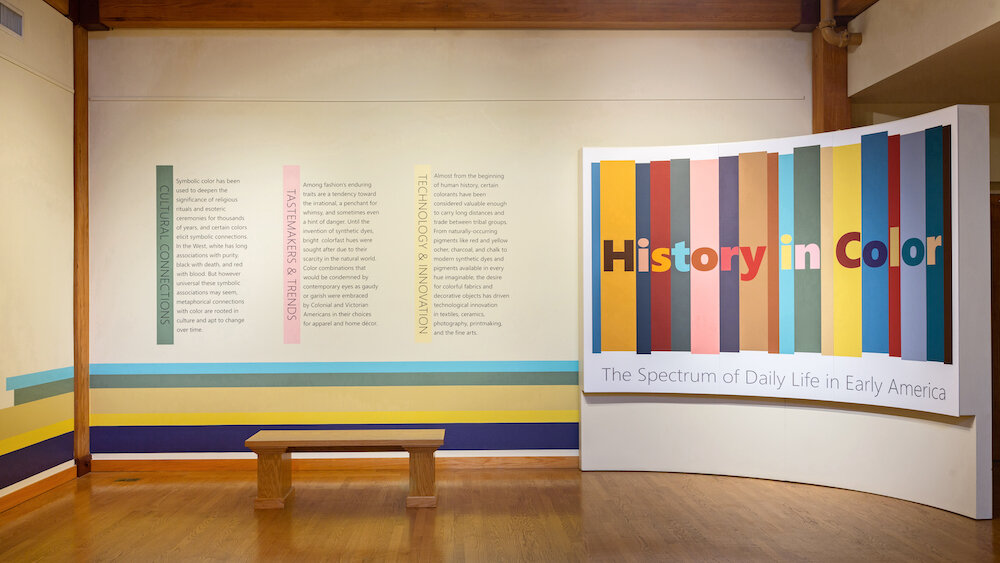
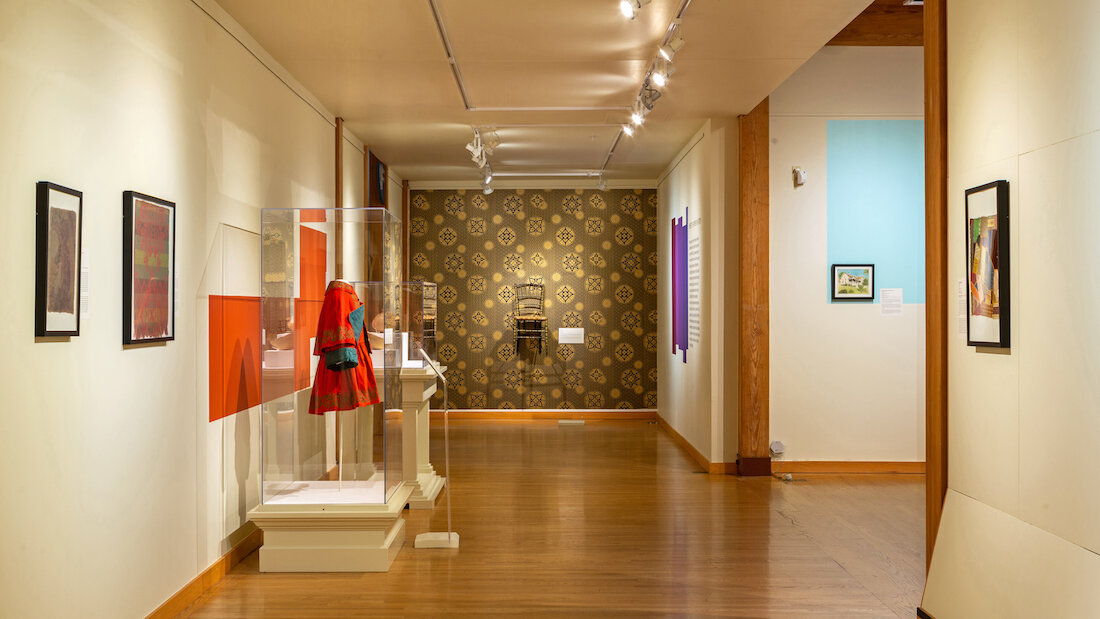
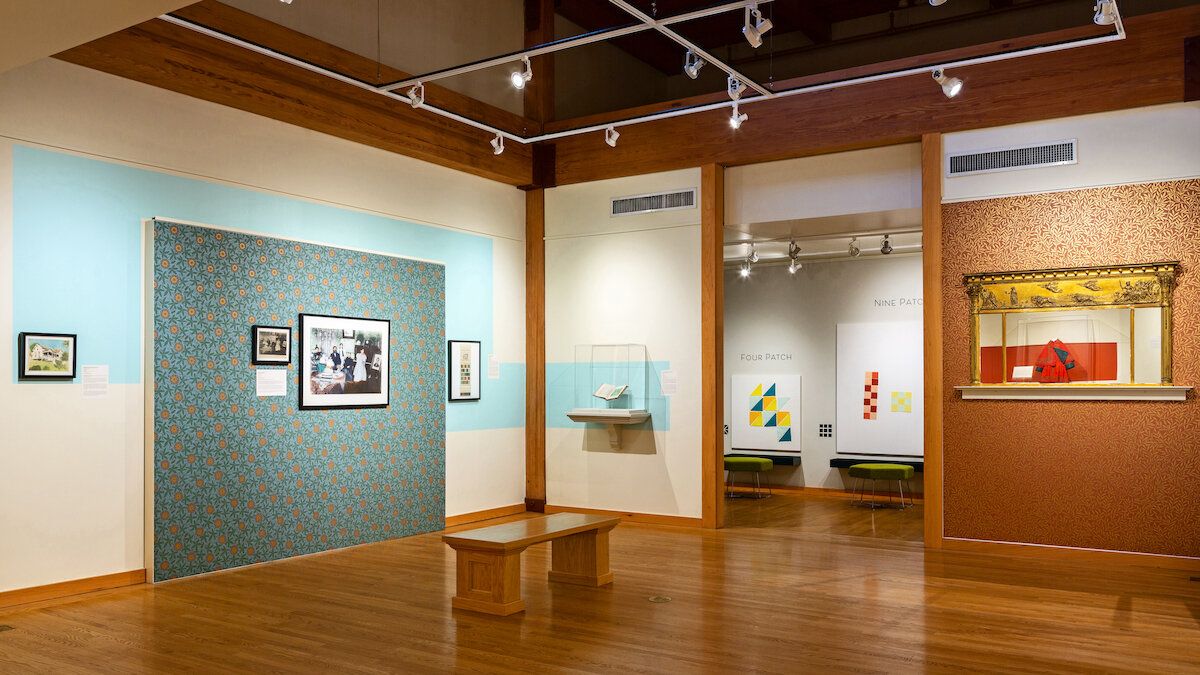
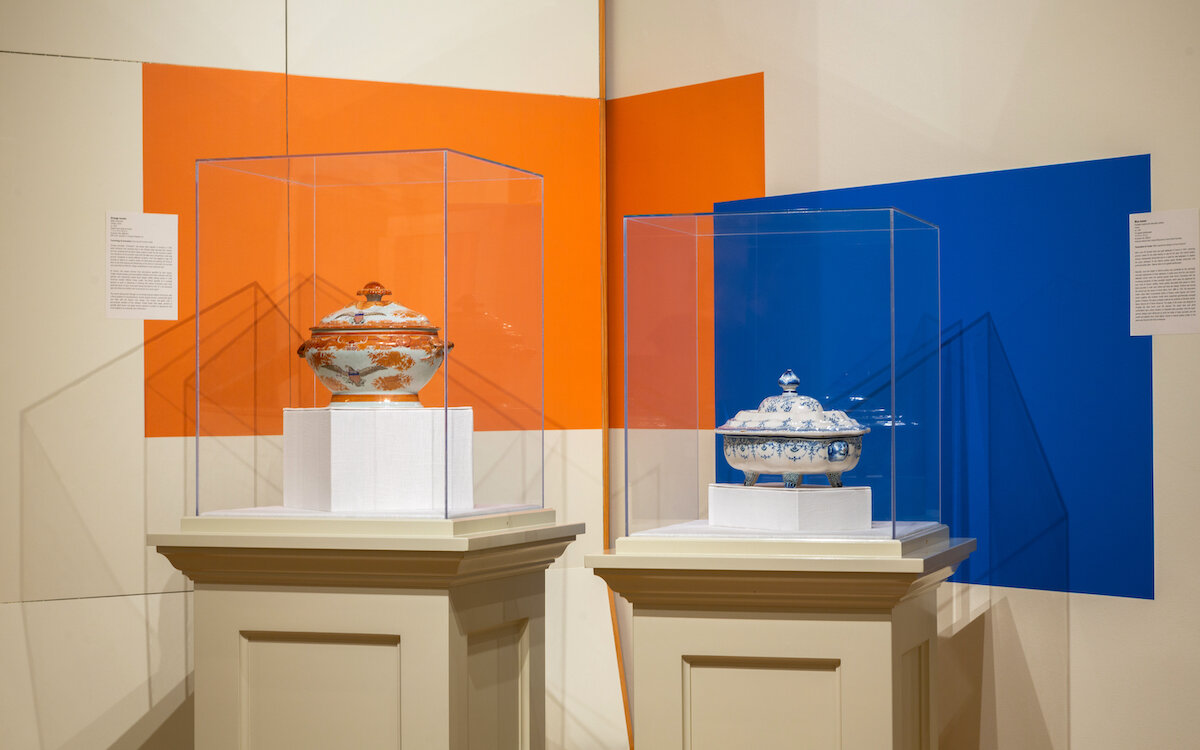
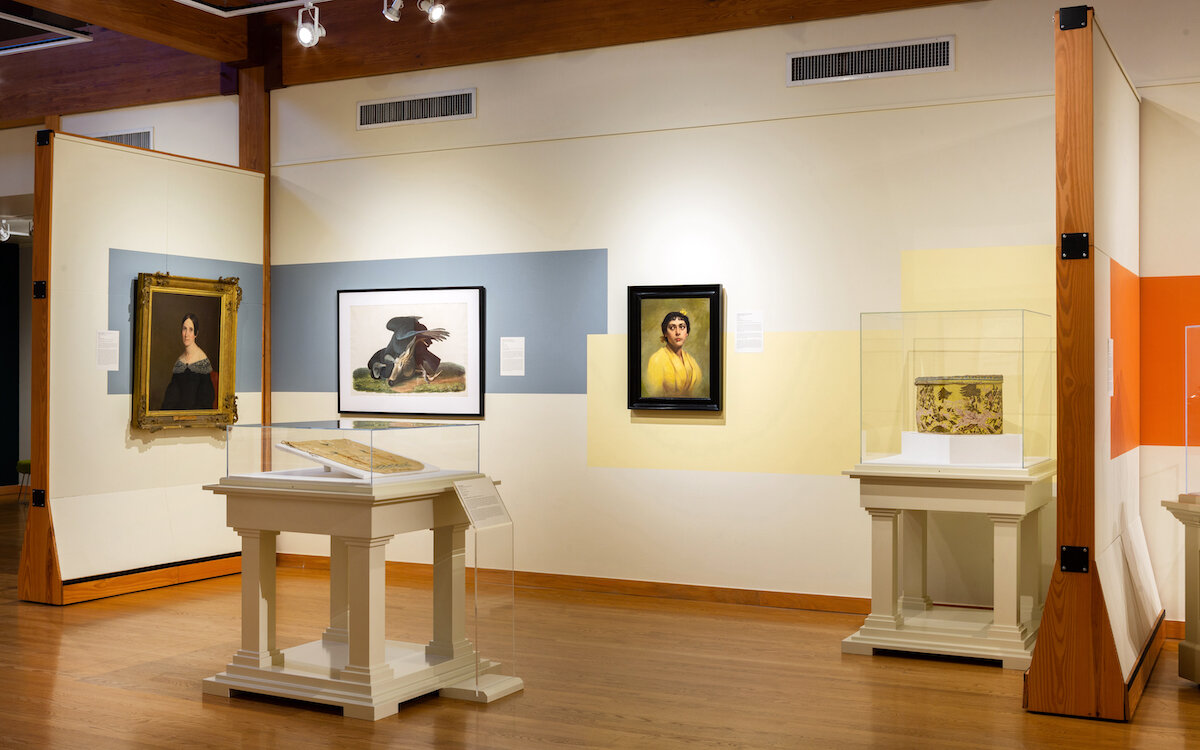
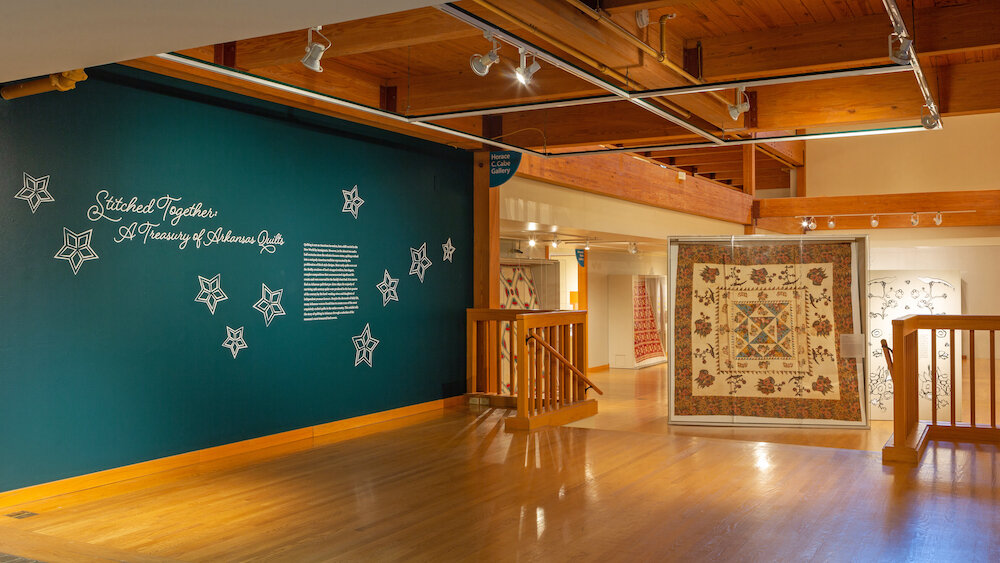
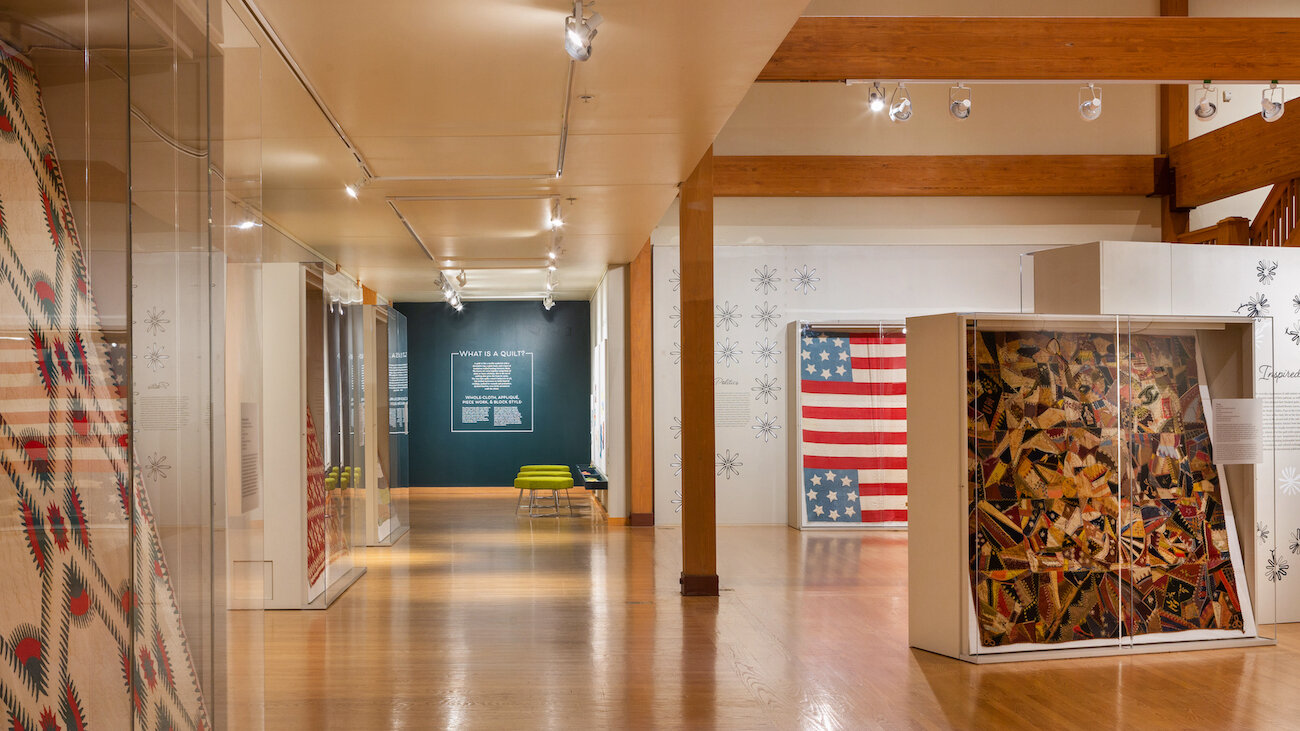

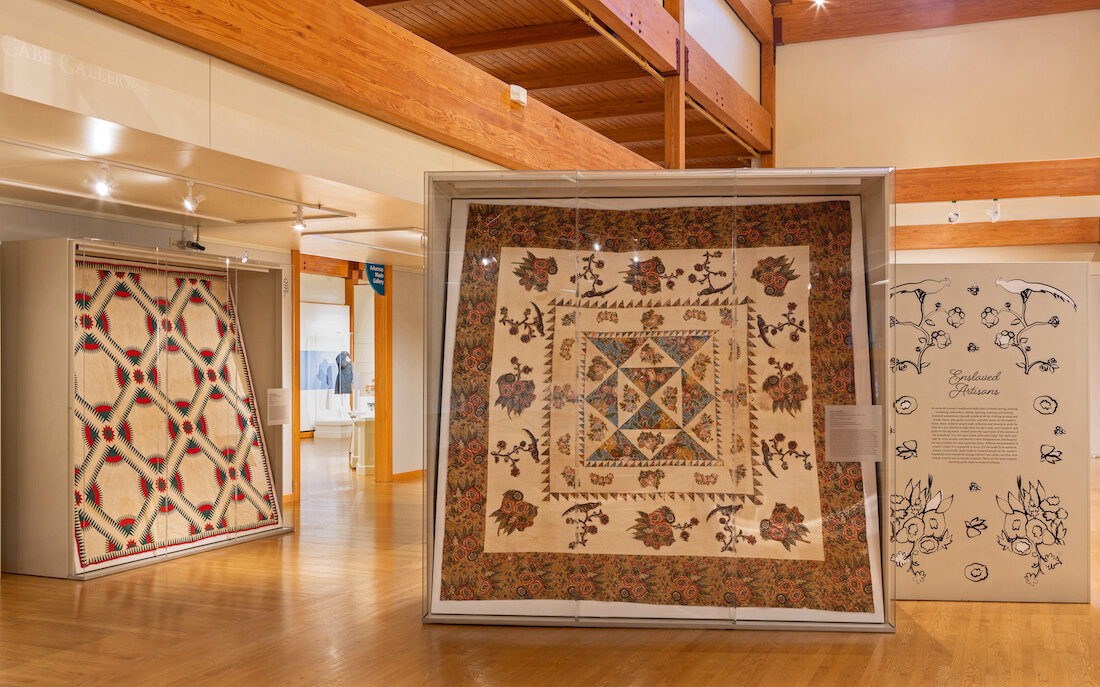
AAS: What exhibits are you working on now? Are there any which you are most excited about?
CV: I tend to fall in love with whatever I’m immersed in at the moment. Victoria Chandler, Jessica Lenehan, and I are in the final stages of creating an exhibit titled Conspicuous Consumption, which is scheduled to open in Arkansas Made Gallery in August. That exhibit focuses on the objects nineteenth century Arkansans made, bought, and used to stay on-trend and in style.
I’m also super excited about displaying artwork by Tim Hursley, James Matthews, and Peter Scheidt in Trinity Gallery in September 2021 (final title TBD). Their exhibit was postponed due to COVID; I’ve been looking forward to this show for at least three years.
AAS: What are your favorite parts of your job?
CV: I have many favorite parts: Learning about and supporting other Arkansas artists! Handling precious historical objects. Being involved in every single step of the curatorial process from start to finish – from idea generation, object selection, going down research rabbit-holes, reconstructing the past through interpretive narratives, envisioning and producing an environment that enables us to tell each object’s individual story, to sharing the creative legacy of Arkansas’s historical makers with our visitors.
AAS: Why is Arkansas art so important?
CV: This theory is entirely anecdotal, but I think a lot of people from Arkansas grow up with an inferiority complex. Before the Internet weakened geographic boundaries and homogenized our cultural experiences, Arkansas was often maligned as a provincial backwater inhabited entirely by inbred moonshiners and barefoot fools. Ironically, the national fascination with the Arkansas Traveler tale, tune, and print (made famous in the 1840s by Arkansas residents Sandy Faulkner and Edward Payson Washbourne, respectively), is partly to blame for this long-standing stereotype. For well over a century, popular opinion echoed that ‘nothing and no one of consequence ever came from Arkansas.’ It’s a refrain I heard often enough that for many years, I believed it myself.
It wasn’t until I worked at HAM and waded knee-deep in the history and material culture of our state that I came to appreciate its complexity and nuance. Objects in the museum’s Arkansas Made collection are real, tangible things that tell stories and personalize the lives of their (often) long-dead makers and owners. Last fall, Victoria Chandler and I explored a handful of collection items in a five-part blog series (linked below) titled Arkansawyers: What makes Arkansas, Arkansas? I believe longtime residents and ‘damn Yankees’ alike would appreciate some of the insights we uncovered by interpreting historical and contemporary objects through the lens of Arkansas culture.

